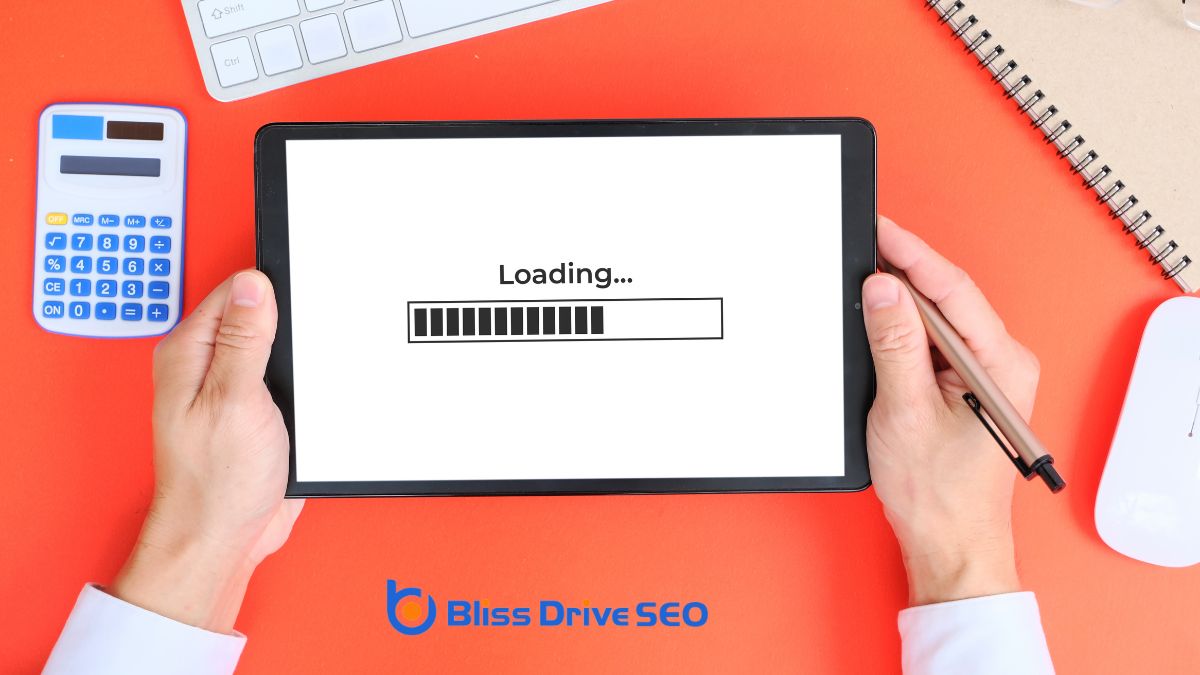
Written by: Richard Fong
Published on August 21, 2024
Published on August 21, 2024

To enhance your website's crawlability, start by optimizing your site structure with a clear, logical layout and effective internal linkingLinks that connect different pages on the same website.. Boost page load speeds by minimizing HTTP requests and optimizing images. Submit an updated XML sitemapA file that lists a website’s important pages to ensure search engines can find and crawl them. to guide search engines through your site. Regularly fix broken links using tools like Screaming Frog and keep your robots.txtA file that tells search engine crawlers which pages or files they can or cannot request from your s... file up-to-date. Manage duplicate contentContent that appears on more than one web page, which can negatively impact SEO. with canonical tags and avoid content syndicationRepublishing content on third-party sites to reach a broader audience.. Implement these practices, and you'll see improved search engine indexingThe process of adding web pages into a search engine's database. and site performance. There's more you can do to make your website even more crawler-friendly.
To enhance your website's crawlability, optimizing your site structure is vital. A clear, logical site structure with organized categories and subcategories helps search engine crawlers navigate and index your site efficiently. Start by keeping your navigation hierarchy shallow; make sure important pages are just a few clicks away from the homepage. This approach boosts crawlability and ensures essential content is easily accessible.
Internal linking is another powerful tool. By connecting related pages, you guide both users and search engine crawlers through your site, enhancing navigation and indexing. Effective internal linking can greatly enhance your site's ranking in search results.
Don't overlook URL optimization. URLs should be descriptive, including relevant keywordsWords or phrases that users type into search engines to find information. to aid in indexing and ranking. Clear, keyword-rich URLs give search engines a better understanding of your content.
Incorporate breadcrumb navigationA navigational aid showing the user’s path to the current page. to provide users and crawlers with a clear path through your site. Breadcrumbs not only improve user experience but also assist search engines in understanding your site structure, further enhancing crawlability.

To boost your website's crawlability, focus on improving page load speed by optimizing image sizes and minimizing HTTP requests. These steps help GooglebotGoogle’s web crawler used for indexing content. access and index your content more efficiently while also enhancing user experience.
Use tools like Google PageSpeed Insights to pinpoint and fix any speed-related issues.
Optimizing image sizes is crucial for enhancing page load speed, which directly impacts both crawlability and user experience. Large image sizes can greatly slow down your site, making it more challenging for search engines to crawl and index your content efficiently.
To address this issue, start by utilizing image optimization tools like TinyPNG or ImageOptim. These tools aid in compressing images without compromising quality, allowing you to decrease file sizes and enhance site speed.
Ensure proper image formatting by selecting the suitable resolution and dimensions for your images. This not only improves page load speed but also guarantees that your images appear crisp and professional.
Additionally, prioritize alt textDescriptions added to images to help search engines understand the content of images. optimization. Including descriptive alt text assists search engines in comprehending the image context and relevance, thereby further enhancing crawlability.
Reducing the number of HTTP requests on your website is an important strategy for improving page load speed and overall user experience. Each HTTP request adds to your load time, so it's essential to minimize HTTP requests wherever possible.
One effective way to do this is to combine CSS and JavaScript files. By merging these files, you reduce the number of requests your server has to handle, which in turn reduces page load timeThe time it takes for a webpage to fully load, affecting user experience and conversion rates..
Tools like Google PageSpeed Insights can help you identify and optimize the number of HTTP requests on your webpage.
For images, consider using image sprites, which combine multiple images into a single file. This technique can greatly reduce the number of HTTP requests.
Additionally, implementing lazy loading for images and other resources ensures that they're only loaded when needed rather than all at once. Asynchronous loading of JavaScript files can also help by allowing other elements of your webpage to load simultaneously.
Submitting an XML sitemap is an essential step to ensure search engines can efficiently discover and index all the significant pages on your website. An XML sitemap acts as a roadmap for search engines like Google, listing all the pivotal pages you want them to crawl. By submitting this file, you're enhancing your website's crawlability and ensuring that even the deepest pages in your site structure are indexed.
An XML sitemap provides search engines with metadataData that provides information about other data, such as its source, format, and usage. about each URL, such as the last update date and the page's significance relative to others. This information helps search engines like Google prioritize which pages to crawl first, improving the efficiency of their indexing process.
Regularly updating and submitting your XML sitemap is imperative, especially for large websites with complex structures. This practice keeps search engines informed about new content and important changes, further enhancing the likelihood that all your pages will be indexed.
Internal linking is a powerful tool that can greatly enhance your website's crawlability by connecting related content, making it easier for search engine crawlers to discover and index more of your pages. By strategically placing internal links, you guide both users and crawlers through your site, improving user experience and boosting your SEO efforts.
When you use internal linking, make sure the anchor text is descriptive and relevant. This helps search engines understand the context of the linked content, aiding in proper indexing. Additionally, well-placed internal links distribute link equity across your site, guaranteeing your most critical pages get the ranking boost they deserve.
A well-connected website structure is key to good crawlability. Regularly audit internal links to identify and fix any issues. This not only helps with search engine indexing but also secures a seamless user experience.
An organized, well-linked site guides visitors to valuable information effortlessly, keeping them engaged longer.

Broken links can significantly undermine your website's crawlability by creating dead-ends for search engine crawlers. When search engines come across broken links, they can't effectively navigate your site, leading to missed indexing opportunities. Regularly checking for broken links is vital, and tools like Screaming Frog can simplify this process. Screaming Frog scans your website and identifies these problematic links, allowing you to address them promptly.
Fixing broken links not only enhances your website crawl but also improves user experience. Visitors who encounter broken links may leave your site in frustration, which can have a negative impact on your SEO. By ensuring all links are functional, you provide a seamless browsing experience that keeps users engaged and satisfied.
Internal linking can also play a significant role in mitigating the impact of broken links. Proper internal linking helps distribute link equity throughout your site, making it easier for search engines to crawl and index your pages. However, monitoring and updating these links consistently is crucial.
Updating your website's robots.txt file is a crucial step in guaranteeing effective crawlability. This text file provides guidance to search engine crawlers on which sections of your site to crawl or not crawl. You can access it in the root directory by adding "/robots.txt" to your website's URL.
To enhance crawlability, regularly update your robots.txt file. Utilize directives like "Disallow" to prevent specific pages or directories from being crawled.
For instance, if you wish to block crawlers from indexing your admin page, you'd include 'Disallow: /admin'. This safeguards that search engines concentrate on the most significant parts of your website content.
Be cautious of syntax errors when updating your robots.txt file, as these can inadvertently hinder search engine crawlers from accessing vital content.
A small error can hinder your site from being indexed accurately, impacting your search engine ranking. Always double-check your directives to confirm they precisely mirror your intentions.
Avoiding duplicate content is crucial to boost your website's SEO and guarantee search engines rank your pages correctly. Start by identifying duplicate content issues and use canonical tags to signal the original version.
Regularly consolidate or remove similar pages to maintain unique and valuable content across your site.
Duplicate content issues can significantly harm your SEO efforts by confusing search engines and diluting ranking signals. To tackle these problems, start by using tools like Siteliner to identify duplicate content across your website. Siteliner will help you pinpoint pages that need attention, allowing you to address them promptly.
One effective approach is to avoid syndicating content across multiple pages or domains. Syndicating content can leadA potential customer referred by an affiliate who has shown interest in the product or service but h... to duplicate content penalties, so it's essential to verify each piece of content is unique. Regularly monitor and update content to maintain its uniqueness and improve your site's crawlability and indexing.
While canonical tags are a valuable tool, remember to use them wisely. Canonical tags help search engines understand which version of duplicate content they should index. This step is vital for maintaining a clear and organized site structure, but don't rely on canonical tags alone.
Consistently monitor your website's content to catch any duplicate issues early. By keeping your content updated and unique, you enhance your site's overall health and performance. Addressing duplicate content issues not only improves your crawlability but also strengthens your SEO efforts, leading to better rankingsThe position at which a website appears in the SERP. and more visibility.
Using canonical tags properly is important for preventing duplicate content issues and consolidating your site's link equity. When you use canonical tags, you tell search engines which version of a webpage is the preferred one, thus avoiding the issue of duplicate content.
This is especially vital for e-commerce sites where similar product pages can easily create duplicate content penalties that harm your SEO performance.
Proper implementation of canonical tags ensures that all link equity and ranking signals are directed to the desired URL, which can greatly enhance your site's SEO performance. However, incorrect implementation can lead to indexing issues and even cause your pages to drop from search results, making it important to get it right.
To avoid these SEO pitfalls, regularly check your canonical tags using tools like Google Search ConsoleA tool by Google that helps monitor and maintain your site's presence in search results.. This helps you confirm that they're correctly pointing to the preferred versions of your pages.
Having similar or duplicate pages on your website can confuse search engines and dilute your SEO potential. To avoid this, you need to consolidate similar pages, which helps prevent keyword cannibalizationWhen multiple pages on a website compete for the same keyword, harming SEO. and strengthens your overall website structure. By merging duplicate content, you make it easier for search engines to understand and index your site efficiently.
Start by identifying duplicate content across your site. Use tools like Google Search Console to find and address these issues once you've pinpointed similar pages, decide which ones to combine. Use canonical tags on the pages you're consolidating to signal to search engines which version should be prioritized for indexing. This step is vital to improving crawlability and avoiding indexing issues.
Regularly auditing your site for duplicate content is essential. By doing so, you can continuously improve your site's structure and boost its SEO potential. Resolving duplicate content issues not only enhances your website's crawlability but also increases your organic search visibility and rankings.
To increase your website's crawlability, guarantee clear, descriptive URLs, establish a logical site structure, utilize internal links, avoid duplicate content, and regularly fix broken links. These steps help search engine crawlers find and comprehend your pages.
Guarantee your site is crawlable by having a clear structure, using descriptive URLs, optimizing internal links, avoiding duplicate content, and submitting an XML sitemap. Regular updates will also help search engines index your site efficiently.
To optimize your web crawler, prioritize efficient URL structures, logical site hierarchies, and robust internal linking. Guarantee you eliminate duplicate content and promptly fix broken links. This approach enhances your crawler's performance and search engine indexing.
To improve your website searchability, use clear, descriptive URLs, organize your site with logical categories and internal links, avoid duplicate content, fix broken links quickly, and optimize images with descriptive filenames and alt text.
By following these tips, you'll greatly improve your website's crawlability. Optimizing your site structure, speeding up page load times, submitting an XML sitemap, using internal links, fixing broken links, updating your robots.txt file, and avoiding duplicate content are all vital steps. Implement them, and you'll make it easier for search engines to understand and index your site, ultimately enhancing your SEO performance. Take action now, and watch your website's visibility soar!